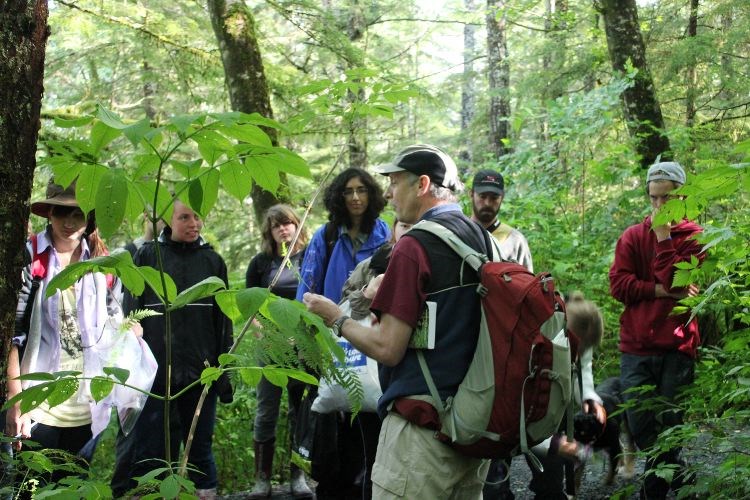A class of 16 students from the University of Northern British Columbia (UNBC) and their instructors recently completed the first detailed assessment of biodiversity in a historically significant section of B.C.'s Skeena estuary.
The study was conducted at the old Cassiar Cannery, which is situated next to several hundred hectares of salt marshes upstream of Port Edwards. The data was collected August 27-28 and has the potential to be of great importance to the study of climate change.
"The carbon stores in BC's estuaries may be greater than those in B.C.'s entire portion of the boreal forest, so they have major environmental significance," said UNBC biology professor Darwyn Coxson, who led the class.
"Of the major estuaries in western North America, the Skeena is the least well known. This data is very important to anyone concerned with climate change and the natural environment."
An estuary is a partly enclosed coastal body of water with one or more rivers or streams flowing into it, and with a free connection to the sea. The students measured plant biodiversity and abundance in the salt marshes as well as the area's physical parameters including salinity, and elevation gradient.
"We found a great diversity of life at the site, which provides sustenance for much of the ocean nearby," Coxson said.
"The salt marsh and eelgrass beds provide critical habitat for juvenile fish, both for migrating salmon, where they provide a critical transitional habitat as the young salmon make the journey from fresh to saltwater habitats, and for many ocean fish, such as rockfish.
"The salt marshes are also a vital habitat for migrating shorebirds and contain many relatively rare plants, such as the northern rice root, which was a major food source for local First Nations."
UNBC will continue to offer the Terrace-based course every other year, and Coxson said it will focus on the same section of the estuary.
"This will provide updated data every year and allow us to determine how the environment is changing over time. We will be able to identify which species are growing in number, which are declining, and at what rates."
Students in the third-year biology course, part of a bachelor's degree offered at UNBC and Northwest Community College's Terrace campus, come from programs such as geography, biology, and natural resources and environmental studies.



